Categories
The massive global shortfall in healthcare professionals is a profound risk to population health and the goal of universal health coverage. How should education providers respond?
Jean McEwan
In a month (July 2019), when the UK media, ever alert to the political and public importance of the NHS, has regaled us with news of the extended waiting times for surgery, and complaints from consultants that tax boundaries are making the financial incentives for extra sessions and leadership roles untenable, one would be forgiven for thinking that the UK is experiencing a workforce crisis. However, the UK currently has one of the most effective and cost-efficient healthcare systems in the world. Nevertheless, 35% of the doctors and 15% of nurses and midwives working in the NHS are foreign graduates, indicating our reliance on the international market for the healthcare workforce.
Calculations in recently published reports from the WHO and World Bank estimate that by 2030 there will be 80 million more healthcare jobs worldwide, driven by the demand of growing economies and aging demographics, but also that there will be a vacancy rate of 1 in 5, with potentially 18M missing from the healthcare work force. In the NHS, it is anticipated that our current workforce vacancy rate will increase to almost a quarter of a million. Given these statistics the UK’s dependency on internationally trained doctors and nurses must only increase over the next ten years unless other measures are taken
What Drives Global Healthcare Workforce Requirements?
The WHO recognises a threshold need for a healthcare workforce of 4.5 per 1000 population as this appears to be associated with achieving Universal Health Coverage, associated decreases in maternal and infant mortality and improved disability adjusted life years. Similar estimates propose that 2.5 nurses are required for every doctor. This ratio is close to that in the UK, though our total medical/nursing workforce numbers at 10.7 per 1000 population is much higher than the minimum requirement, yet 50% lower than that of many other European nations. In 2030, the poorest countries will still not be able to meet those need-driven requirements, through financial constraints and workforce development deficiencies, and these nations will still need to be supported through targeted aid.
However, the demand for healthcare and its workforce is primarily driven by a country’s economic prosperity, and by the public investment on healthcare services. Over the next 30 years economic growth will increase most, and healthcare workforce shortages predicted to be greatest, in middle-income countries particularly in East Asia and the Pacific region. Public expenditure on healthcare (for example, planned to be 10.4% of GDP in Malaysia in 2019, in contrast to 7.1% in the UK) is an additional driver to demand. If the government will pay for a health service, the population will use it. In contrast, direct out of pocket health costs and personal contributions tend to drive down demand because these focus the individual on what they value, and of course drive the poorest out of the market and increase the chance of catastrophic medical costs at times of personal and family health crisis. In planning their healthcare priorities, governments need to give careful consideration to what is most impactful on population health and merits inclusion in universal healthcare coverage, and need to balance individual preferences with population needs.
How can we influence the supply (and shortages) in the healthcare workforce?
It may seem simple: if there is a healthcare workforce market that needs to be satisfied, shouldn’t we just train more doctors and nurses (and allied professionals, such as pharmacists, physiotherapists and radiographers, who are rarely counted and their role often discounted by the international bodies)? However, increasing availability of training does not guarantee students will partake of the opportunity. Nevertheless, we cannot increase our global numbers without increasing participation in training. Healthcare professional education is usually delivered by universities, which are by and large now run as social enterprises with an increasing need to cover all costs for all their activities and the experience they offer. Higher Education is expensive and a cost to students and their families which needs to have a guaranteed return on that investment. Thought needs to be given once more to how governments fund healthcare education, with consideration of repaying loans and giving grants to those who agree to work in their public healthcare systems, so the pipeline is assured. Increasingly there is a need for approved and appropriate education, training and development in the workplace itself, so supply of the university courses is only a small part of dealing with immediate and future healthcare workforce needs.
Qualifications are governed and approved by professional regulatory bodies, and fine balances need to be drawn between professional protectionism and quality controls, and as yet, there are few international or even regional agreements on transferrable qualifications. Clinical professionals are part of a global trade in Healthcare, which encompasses both workforce and service supply, and such commodities can be part of lucrative international trade as long as standards and quality controls if staff qualifications and service provision can be assured.
Clinical Education for a new type of clinical workforce.
Healthcare is often considered first and foremost a vocation, but this must not be exploited unfairly. Pay and conditions of employment need to be competitive and attractive and again the economic advantages of a secure, stable and adequately rewarded workforce acknowledged by public paymasters.
Healthcare work supports society by improving the health and productivity of those at risk of disease or who have illness. Healthcare work also provides employment opportunities, further stimulating the economy. Since many of the jobs in healthcare have a predominance of women, this has an important societal role, particularly in developing nations where the opportunities for gainful employment for women are limited. However, as physically demanding jobs in manufacturing and administrative jobs become automated or move to lower cost countries, healthcare needs to be promoted as worthwhile and prestigious to men as well as women. Importantly, as longevity means that working lives must be extended, opportunities to retrain and develop second careers in healthcare should be promoted, while developing the existing workforce. The resultant professional recognition and new enlivening jobs can add fulfillment to this phase of life.
Cross professional Clinical Education and the Clinical Educator, based in universities and liaising with healthcare organisations, particularly for postgraduate training, can bring professional insights into workforce planning. The redistribution of tasks and responsibilities for the various parts of the diagnostic, treatment and care pathways to non-medical or non-nursing colleagues, is crucial to the rationalization and improved efficiency of healthcare work. The Clinical Educator has potential to grasp this unique responsibility, redefining the scope of practice of the workforce, principally leading the process of redistributing much of the work traditionally undertaken by doctors, both specialists and generalists, while still ensuring adequate experiences for necessary skill and heuristic development of doctors themselves. Various administrative tasks, focused practical skills, drug prescription within scope of practice, and interpreting simple diagnostic algorithms and treatment pathways and checklists, need to be mastered then distributed to other professionals who can become highly effective autonomous practitioners, within scope of practice, and within a team. Some tasks also have potential for automation using Artificial Intelligence. Collectively these developments can ensure that we have the right people to do the jobs that need to be done and that no one is doing work that a less expensive but equally effective professional could undertake. The creation and evaluation of new knowledge (research) including addressing areas of technical and scientific complexity or uncertainty, and advocating for the patient, remains a defining role for the doctor, though the executive supervisory role (leadership) also needs to be embraced by some, if not all, doctors.
As part of this distribution of roles, a further group needs to be empowered by clinical education: patients themselves, and their life partners and families who do the majority of all caring. New tools for reference and contact, and algorithms managed through the internet are transforming the information base, while personal interest is driving learning and understanding and support networks. The next stage will be basic education in human physiology and health for all, so that knowledge and ownership of personal health related behaviours might influence lifestyle and environment choices from early life.
Averting the predicted Global Healthcare Workforce Crisis in the next ten years, will require a complex mix of reducing demand through public health and value-based provision, but Clinical Education holds many of the answers to addressing the needs, demand and supply of the healthcare workforce.
- Liu et al. Global Health Workforce Labor Market Projections for 2030. Human Resources for Health (2017) 15:11
- World Health Organization. Health workforce and services: Global strategy on human resources for health: workforce 2030. ISBN 978 92 4 151113 1 [Internet 2016, cited 2019 July 19] https://www.who.int/hrh/resources/globstrathrh-2030/en/
- The Institute for Health Metrics and Evaluation (IHME): http://www.healthdata.org/
- Mark Britnell. Human: Solving the Global Workforce Crisis in Healthcare. Oxford University Press 2019
About the author
Jean McEwan had along academic career at University College London before spending five years as Vice Dean (Education) at the University of Exeter where she led on the development and delivery of the education in the new Medical School, including the medical degree programme and a wide range of undergraduate and postgraduate healthcare professional courses. She continues in clinical practice at University College London Hospitals NHS Foundation Trust .


